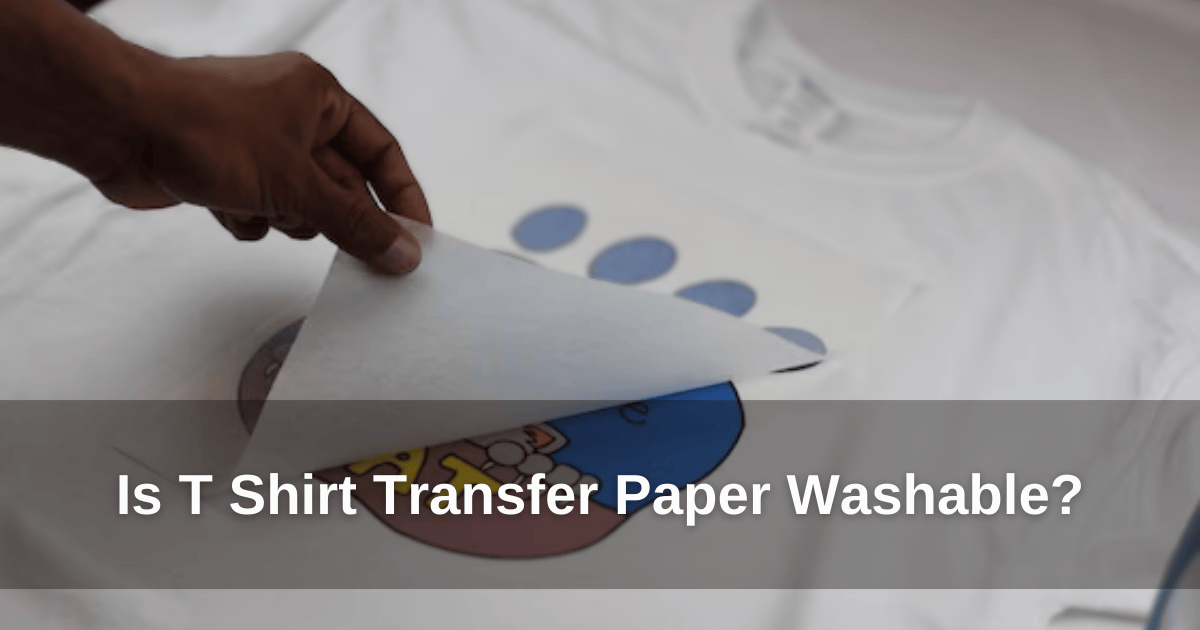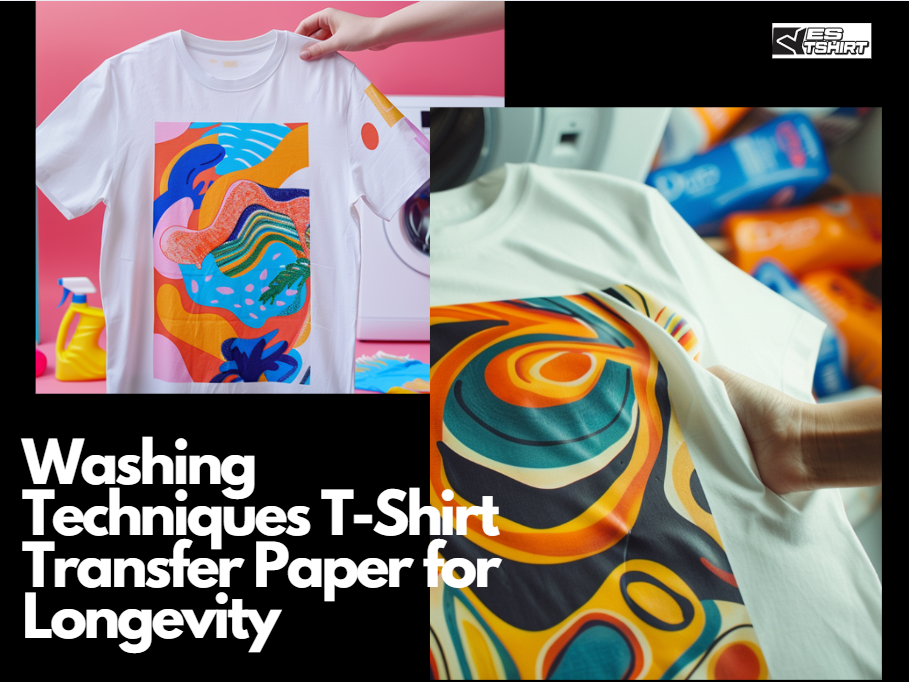When you first try T Shirt transfer paper, you might wonder if it’s actually washable. The durability of your design depends on several factors, such as the type of transfer paper and how you care for the garment afterward. You might think a simple wash will erase your hard work, but that’s not necessarily the case. So, how can you guarantee your design withstands the test of time and multiple washes? There are specific techniques and tips you can follow to keep your T-shirt looking fresh. Curious about what those are?
Key Takeaways
- Transfer paper designs are washable if applied correctly with appropriate heat, pressure, and fabric type.
- Use cold water and mild detergents to prevent cracking or peeling of transfer designs during washing.
- Turn garments inside out before washing to reduce friction on the transfer and extend their lifespan.
- Frequent washing can degrade transfer integrity; limit washes to maintain design quality.
- Air drying is recommended to preserve transfer adhesion; low-heat drying should be used cautiously.
Types of T-Shirt Transfer Paper
When exploring the world of T-shirt transfer paper, you’ll encounter several types, each designed for specific applications and fabric types. The most common are inkjet transfer and laser transfer papers. Inkjet transfer paper is tailored for use with inkjet printers, offering high color compatibility and vibrant results on both light and dark fabrics. It often provides a choice between glossy finish for a shiny look or matte finish for a more subdued appearance. Paper thickness varies, affecting the final texture and feel of the printed design on the fabric.
Laser transfer paper, on the other hand, is engineered for laser printers. It typically withstands higher heat transfer processes, which can result in more durable prints. This type generally works well with light fabric but may require specialized adhesive types for dark fabric to guarantee the design adheres properly. The adhesive types used in these papers determine how well the print bonds to the fabric, impacting washability and longevity.
Both inkjet and laser transfer papers demand careful selection based on your printer type, desired finish, and the fabric’s color and material to achieve the best results.
Preparing Your Fabric of T-shirt
To guarantee the ideal adhesion of the transfer paper, you must pre-wash the fabric without fabric softeners to remove any sizing or chemical residues that can interfere with the transfer process. After washing, iron the fabric to create a smooth, wrinkle-free surface, which is essential for even heat distribution during transfer. Additionally, verify that the fabric is completely dry to prevent steam interference that can compromise the transfer integrity.
Fabric Pre-Wash Importance
Why is fabric pre-wash important when preparing for a T-shirt transfer project? Pre-washing your fabric is essential to guarantee ideal results. One primary reason is to prevent fabric shrinkage. If you skip this step, your T-shirt might shrink after the first wash, causing the transfer to wrinkle or distort. This not only affects the aesthetic of your design but also its longevity.
Moreover, pre-washing helps in mitigating dye bleed. New fabrics often have excess dye that can bleed during washing, potentially affecting the transfer’s appearance by staining or discoloration. By washing the fabric beforehand, you guarantee any excess dye is removed, thereby maintaining the integrity of your transfer design.
Additionally, pre-washing removes any chemicals and finishes applied to the fabric during manufacturing. These substances can create a barrier that hinders the transfer paper’s ability to adhere properly to the fabric. By eliminating these residues, you improve the bonding process, which is essential for durable and crisp transfers.
Surface Preparation Steps
Before starting your T-shirt transfer project, guaranteeing meticulous surface preparation is vital for the best results. Proper preparation involves several key steps to enhance adhesion and longevity. Let’s explore the process to confirm the fabric is primed perfectly.
- Surface Cleaning: Begin by thoroughly cleaning the fabric. Use a lint roller to remove any loose fibers, dust, or debris. It’s essential to eliminate contaminants that might interfere with the transfer’s adhesive properties. If your fabric is susceptible to lint, a quick pass with a lint remover can make a significant difference.
- Adhesive Preparation: Next, focus on the adhesive preparation. Lightly mist the fabric with a spray bottle filled with distilled water. This step helps in achieving ideal moisture levels, which can enhance the adhesive’s grip on the fabric. Avoid soaking the fabric, as excess moisture can lead to poor adhesion.
- Smoothing the Surface: Finally, confirm the fabric is wrinkle-free. Use a heat press or iron to flatten the surface completely. An even surface ensures that the transfer paper adheres uniformly, preventing air pockets and uneven application. Always follow the manufacturer’s instructions for temperature and pressure settings.
Applying Transfer Paper Correctly
Understanding the nuances of applying transfer paper correctly can make a significant difference in your fabric customization projects. The first step is selecting the appropriate transfer paper type for your fabric. Light transfer paper works best on white or pastel fabrics, while dark transfer paper is ideal for darker materials. Each type interacts with fabric differently, so choosing the correct one is vital for best results.
Once you’ve selected the right transfer paper, mastering heat press techniques becomes essential. Set your heat press machine to the recommended temperature and pressure for the specific transfer paper type you’re using. It’s usually between 350°F and 375°F, but always refer to the manufacturer’s instructions. Preheat the fabric for a few seconds to eliminate moisture, ensuring a smooth transfer process.
Position the transfer paper with the printed side facing down on the fabric. Lower the heat press platen, applying firm, even pressure for the suggested duration, typically 10 to 15 seconds. Avoid moving the press during this time to prevent misalignment. Afterward, gently peel the backing paper while it’s warm for light transfer paper or cool for dark transfer paper, ensuring a flawless application.
Washing Techniques T-Shirt Transfer Paper for Longevity
To guarantee your custom t-shirt designs maintain their vibrancy and longevity, incorporating proper washing techniques is essential. First, consider your fabric choices; selecting high-quality, durable fabrics can greatly impact how well the transfer paper adheres and withstands washes. Cotton blends are often recommended due to their ability to hold up under frequent washing cycles.
Here’s a structured approach to guarantee your designs last:
- Washing Frequency: Limit the frequency of washes to reduce wear and tear on the transfer. Aim to wash only when necessary, as frequent laundering can degrade the transfer more rapidly.
- Water Temperature: Use cold water settings to prevent the transfer from cracking or peeling. Heat can be detrimental to the adhesive properties of transfer paper, so avoid hot water.
- Detergent Selection: Opt for mild, non-abrasive detergents. Harsh chemicals can weaken the fabric and the transfer, leading to fading and damage.
Always turn the garment inside out before washing to minimize direct friction on the transfer. By adhering to these washing techniques, your custom designs will remain vibrant and durable, extending the life of your personalized t-shirts.
Common Mistakes to Avoid When Washing Your T Shirt Transfer Paper
When applying heat transfer paper, verify you’re using the correct temperature and pressure settings as incorrect heat application can cause incomplete adhesion or damage to the design. It’s essential not to ignore the specific wash instructions provided by the transfer paper manufacturer, as failing to do so may lead to premature fading or peeling. To maintain the integrity of your design, always follow garment care guidelines to optimize durability and appearance.
Incorrect Heat Application
Precision is key when applying heat to t-shirt transfer paper, as incorrect heat application can lead to unsatisfactory results. You need to understand that both heat settings and transfer time are vital factors in achieving a vibrant and durable design. Too much or too little heat can result in faded prints or incomplete transfers. To guarantee success, pay attention to the following:
- Determine the Ideal Heat Settings: Different fabrics and transfer papers require specific heat levels. Always refer to the manufacturer’s guidelines to set the appropriate temperature on your heat press or iron. A digital heat press with adjustable settings can provide greater control.
- Adhere to Recommended Transfer Time: Timing is as critical as temperature. Each type of transfer paper comes with a recommended duration for heat application. Overextending or shortening this time can impact the adhesion and longevity of the design.
- Guarantee Even Heat Distribution**: Uneven heat can cause patchy transfers. Make sure the entire surface of the transfer paper receives consistent heat. A quality heat press** typically guarantees uniform distribution, but if using an iron, apply steady pressure and consistent motion.
Ignoring Wash Instructions
Many enthusiasts overlook the washing guidelines accompanying t-shirt transfer paper, leading to the premature degradation of their designs. It’s essential to adhere to specific care instructions to maximize transfer paper longevity. Begin by turning the garment inside out prior to washing. This simple step minimizes direct abrasion on the design, preserving its vibrancy and adherence to the fabric.
Use a gentle cycle with cold water, as hot water can cause the transfer to crack or peel. Avoid using bleach or harsh detergents, which can break down the adhesive properties of the transfer paper. Instead, opt for mild detergents that protect the integrity of the design.
When it comes to drying, air drying is preferred over machine drying. High heat from a dryer can greatly reduce transfer paper longevity. If you must use a dryer, set it to a low-heat cycle to minimize heat exposure.
Finally, refrain from ironing directly over the transfer. If ironing is necessary, place a cloth over the design to shield it from direct contact with the iron. By following these care instructions meticulously, you’ll maintain the quality and durability of your transferred designs.
Enhancing the Design Durability of T Shirt Transfer Paper
To enhance the durability of your t-shirt transfer designs, focus on selecting the right transfer paper and applying the transfer with precision. Achieving design longevity starts with choosing high-quality transfer paper that supports colorfast techniques. This guarantees vivid colors remain vibrant through multiple washes.
- Select Premium Transfer Paper: Opt for paper specifically designed for your fabric type. Whether it’s for cotton or synthetic blends, the right paper will adhere better and reduce fading.
- Apply with Accurate Temperature and Pressure: Use a heat press, which delivers consistent heat and pressure for ideal adhesion. Following the manufacturer’s temperature guidelines is vital to prevent premature peeling or cracking.
- Pre-treat and Post-treat: Pre-wash the fabric without fabric softeners to remove residues that hinder adhesion. After transferring, let the design cure for 24 hours before the first wash. This step solidifies the bond between the paper and fabric.
Some Troubleshooting Transfer Issues
While enhancing design durability focuses on proactive measures, troubleshooting transfer issues requires a reactive approach to resolve common problems. When you encounter issues like design fading or peeling, it’s essential to assess transfer paper compatibility with your fabric and ink first. Incompatibility can lead to suboptimal adhesion and image degradation. Make certain you’re using the correct type of transfer paper for your fabric type, whether it’s cotton, polyester, or a blend.
After addressing compatibility, inspect your application process. If designs are fading, it might be due to insufficient pressure or improper heat application. Use a heat press for consistent temperature and pressure, as an iron may not always provide uniform heat across the design area.
Here’s a quick troubleshooting reference:
| Issue | Possible Solution |
| Design Fading | Check transfer paper compatibility and heat settings |
| Peeling Edges | Increase pressure and make certain of even heat distribution |
| Incomplete Transfer | Re-assess time and temperature settings |
| Ink Bleeding | Verify ink and fabric compatibility, adjust pressure |
| Blurred Images | Use high-resolution designs and correct heat settings |
Frequently Asked Questions
1. Can Transfer Paper Be Used on Colored Fabrics?
You can use transfer paper on colored fabrics by selecting the right type. Opt for opaque transfer paper for colored fabric compatibility. This guarantees vibrant colors and clear designs, maintaining image quality without fabric interference.
2. Is Transfer Paper Safe for Children’s Clothing?
Exploring the theory of transfer paper’s safety for children’s clothing reveals valid safety concerns. Guarantee fabric compatibility by choosing non-toxic, CPSIA-compliant transfer paper. Such industry standards protect against harmful chemicals, guaranteeing safe, long-lasting designs for young wearers.
3. Can I Use Transfer Paper With a Regular Home Printer?
You can use transfer paper with a regular home printer. Confirm home printer compatibility by selecting appropriate transfer paper brands that specify inkjet or laser suitability. Check for manufacturer guidelines to guarantee ideal transfer quality and longevity.
4. How Do I Store Unused Transfer Paper?
You should store unused transfer paper in a cool, dry place to maintain its quality. Proper storage involves using humidity control measures, like desiccant packets, to prevent moisture damage and guarantee peak performance during future applications.
5. Does Transfer Paper Work With Synthetic Fabrics?
Ever wonder if transfer paper works with synthetic fabrics? Yes, it does. Confirm your transfer paper is designed for synthetic fabric compatibility. This enhances transfer paper durability, preventing peeling or cracking, and confirming vibrant, long-lasting prints.
Final Thoughts From Yes T-Shirt
At its core, ensuring your t-shirt transfer lasts is like nurturing a delicate garden; it requires attention and care. Choose the right transfer paper, adhere to precise application techniques, and follow washing guidelines like using cold water and mild detergents. By avoiding common pitfalls and embracing best practices, you’ll extend the vibrancy and longevity of your designs. Ultimately, a little diligence goes a long way in keeping your prints crisp and enduring through multiple washes.















